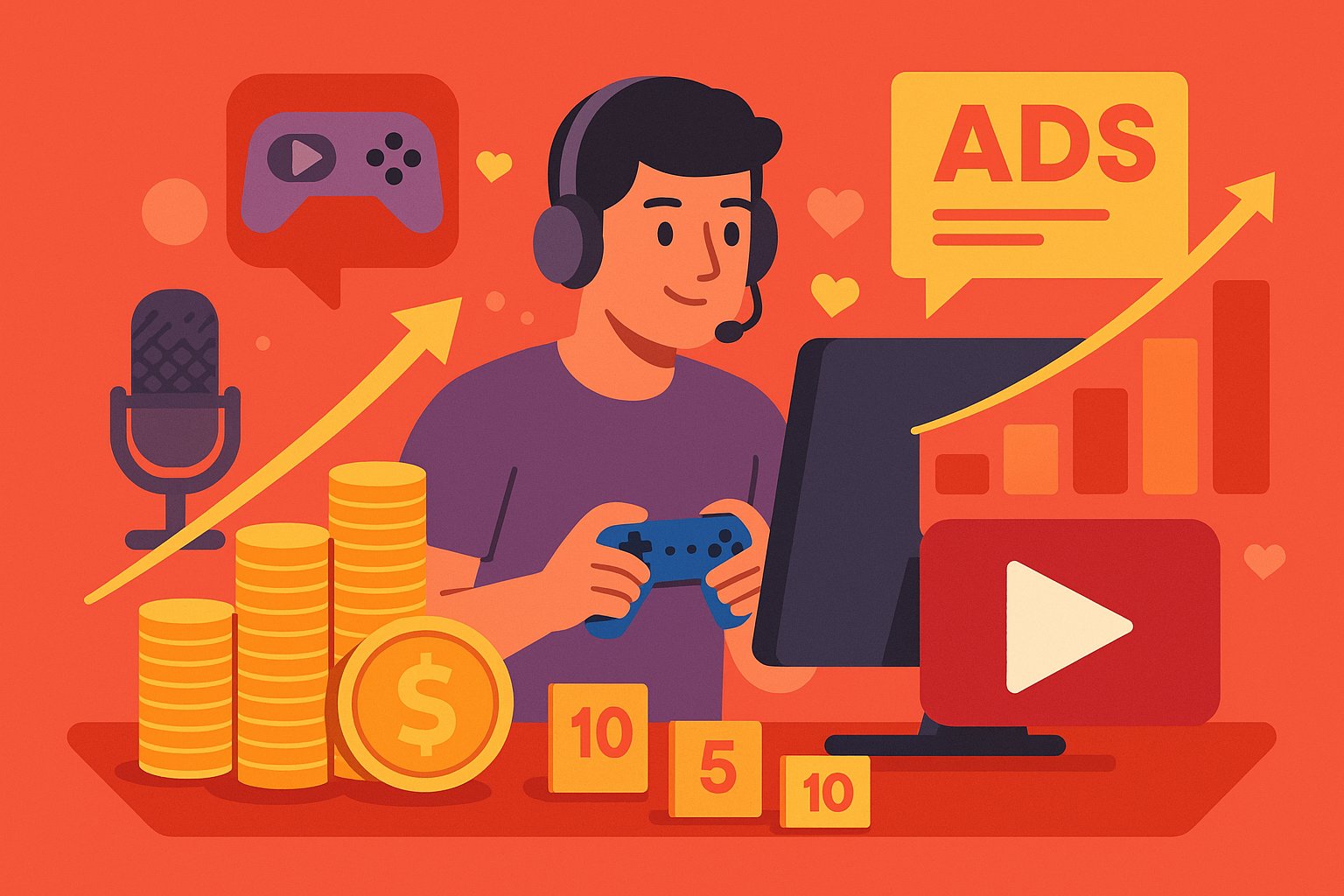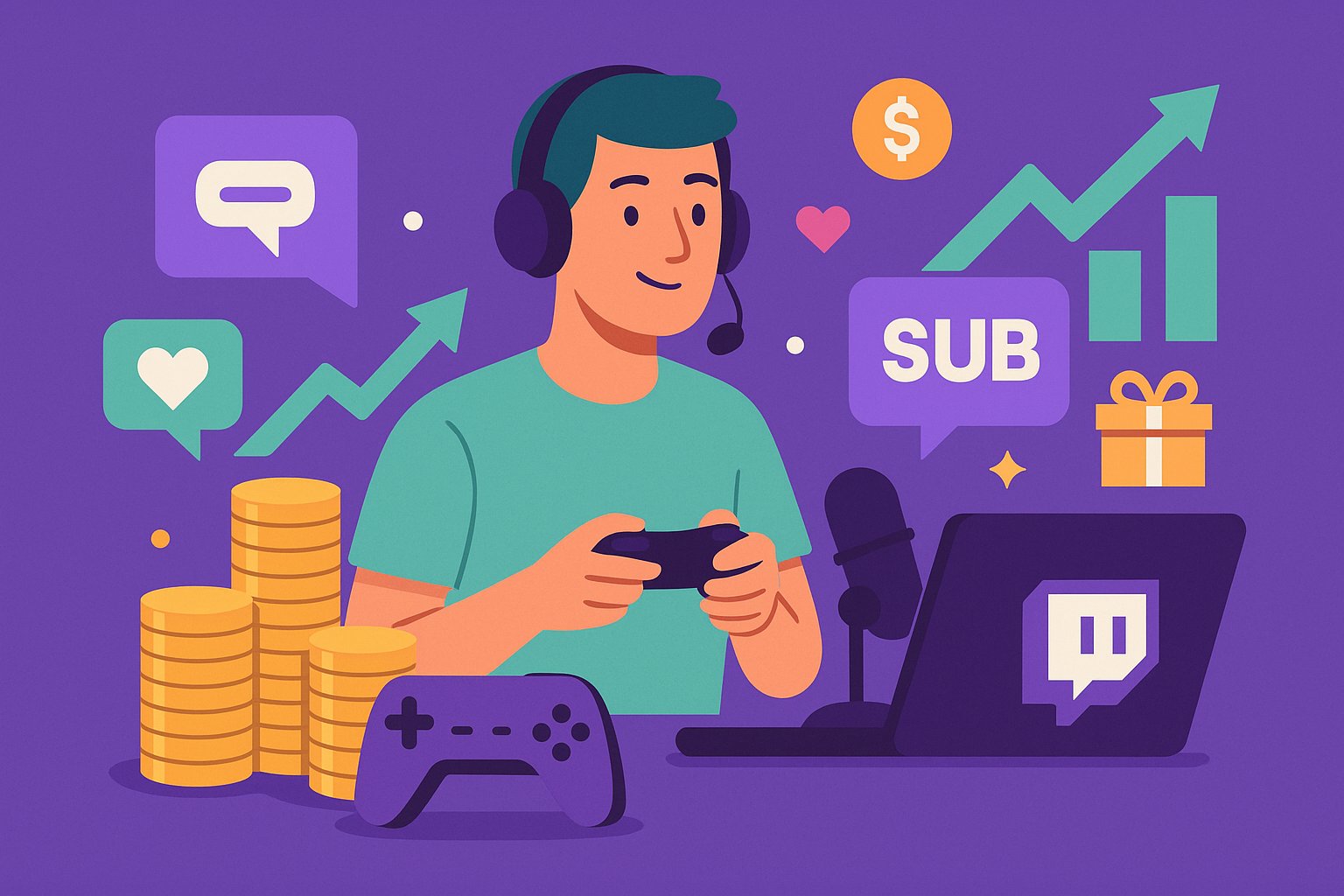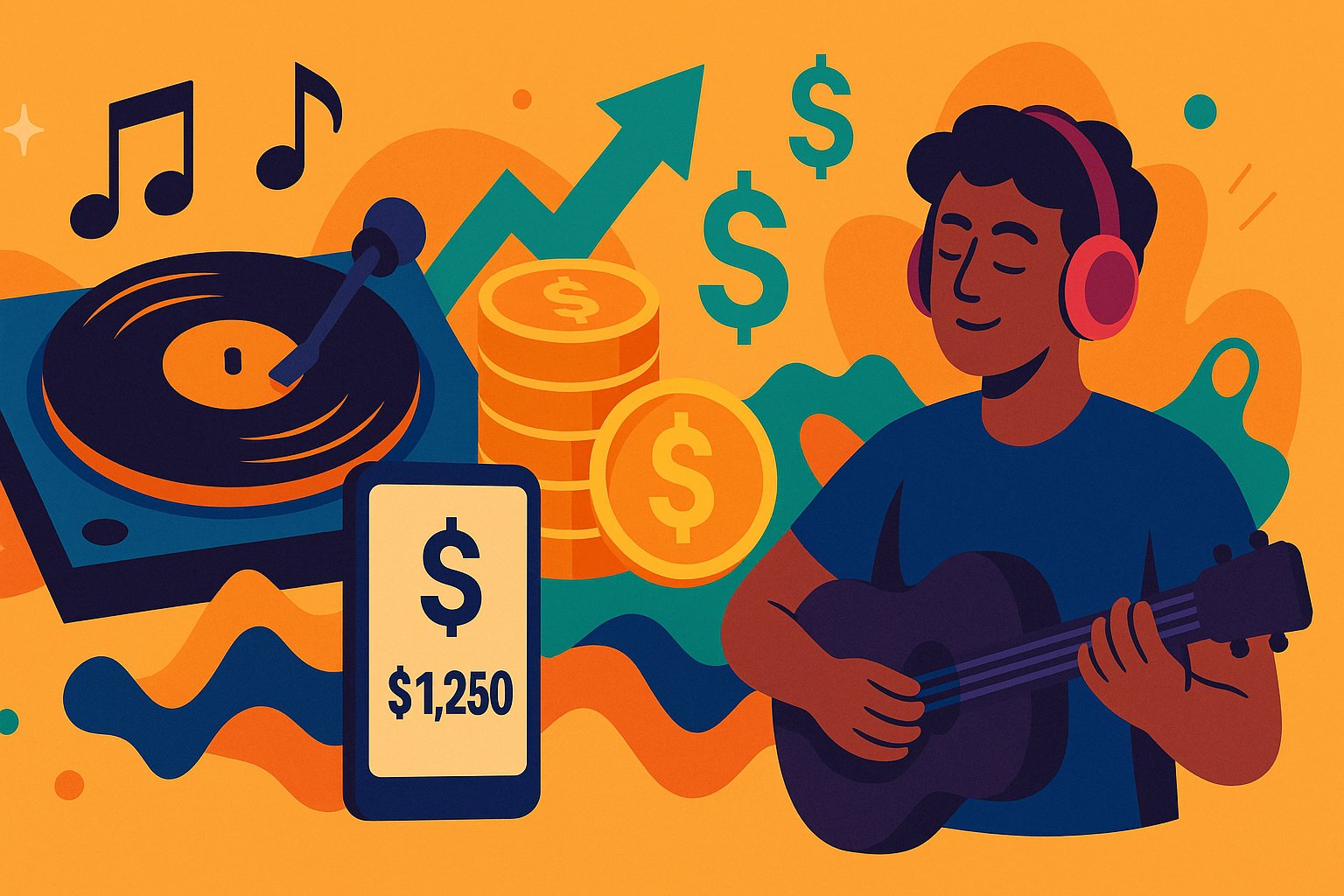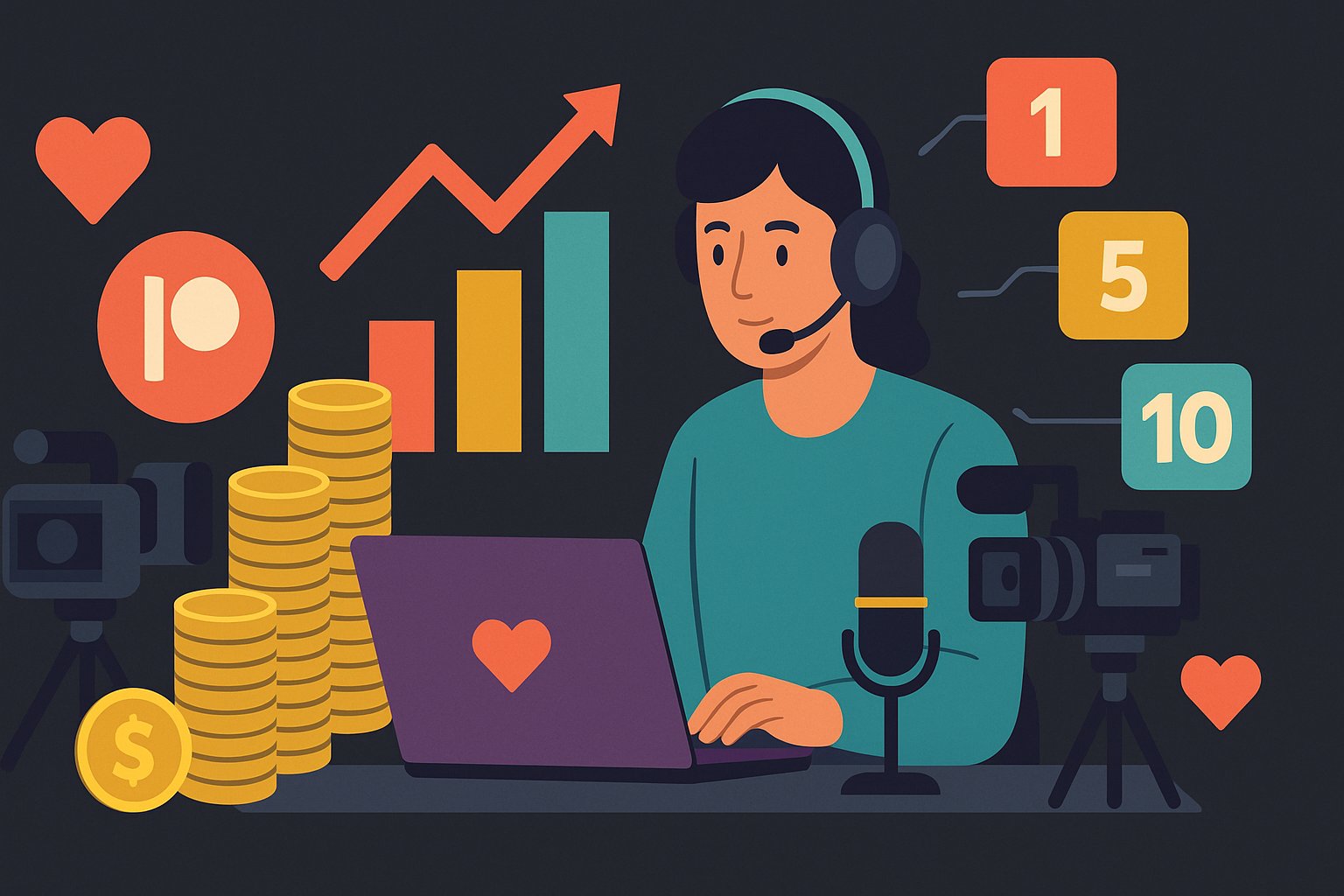From Hobby to Hustle: The Rise of Gaming Content on YouTube
In the early 2010s, video game enthusiasts found themselves at a crossroads: share their gameplay highlights on personal blogs and niche forums or broadcast live on underpowered, cobbled-together streaming setups. Revenue was a distant dream—most platforms offered no direct way for creators to monetize content. Yet as YouTube’s audience soared, the platform introduced its Ad Revenue-Share Program, transforming casual gamers into professional content creators. This seismic shift enabled everyday players to turn their passion into livelihoods, forging a path from hobbyist uploads to high-production live streams with six-figure incomes.
YouTube Partner Program: A Game-Changing Initiative
YouTube’s Partner Program (YPP) paved the way for monetization by sharing ad revenue with creators. Gamers who joined YPP earned 55 percent of ad income generated around their videos and streams, with YouTube retaining the remaining 45 percent. This split aligned incentives: as creators produced more engaging content and attracted larger audiences, their ad revenue climbed steeply. To qualify, gamers needed at least 1,000 subscribers and 4,000 public watch hours in the past 12 months—a bar easily scaled by posting consistent, high-quality gaming videos. This democratization of earnings empowered niche creators to compete alongside established gaming personalities, fostering a vibrant ecosystem of varied voices and playstyles.
Building Blocks of Monetization: Ad Formats and Revenue Streams
YouTube’s ad ecosystem comprises multiple formats—pre-roll, mid-roll, banner, and overlay ads—as well as YouTube Premium revenue shares. Gamers quickly learned to optimize for each: tutorial videos and long-form playthroughs integrated mid-roll ads, generating higher RPM (revenue per mille), while quick highlights benefited from pre-roll. Live streams enabled display ads and sponsored cards during gameplay, complementing real-time Super Chat and channel memberships. The result was a multifaceted income stream: ad revenue laid the foundation, while live interactivity and supplemental features supercharged totals. Understanding these formats became critical; savvy streamers timed ad breaks during natural gameplay lulls and designed content lengths to maximize monetizable minutes.
Crafting Content That Captivates: The Art of Engagement
In a saturated market, content that resonated emotionally and offered authentic personality stood out. Successful channels blended skillful gameplay with charismatic commentary, humor, or educational insights. Walkthroughs of new releases and challenge runs showcased gaming prowess, while reaction videos to trailers and esports commentary tapped into trending discussions. Many gamers diversified formats—mixing live streams with edited vlogs, “Let’s Plays,” speedruns, and community play sessions—to keep viewers invested. Engagement metrics such as likes, comments, and shares boosted YouTube’s recommendation algorithm, exposing creators to wider audiences. As watch time surged, so did ad impressions, creating a virtuous cycle where quality content yielded both viewer loyalty and higher ad revenue.
SEO Strategies: Being Found Amidst the Noise
Visibility on YouTube hinges on search engine optimization. Gamers mastered keyword research to title videos with phrases like “Elden Ring boss fight,” “Fortnite live stream,” or “Minecraft speedrun tips,” matching user queries precisely. Detailed descriptions included timestamps, relevant links, and targeted tags to aid YouTube’s indexing. Custom thumbnails featuring bold text and expressive faces improved click-through rates, a metric YouTube closely monitors for ranking. Playlists organized related content—such as game series or tutorial sequences—encouraged binge-watching, boosting total watch hours. By applying search best practices, creators accelerated channel growth, directly influencing ad revenue potential through increased impressions and premium ad placements.
Community Building: The Heartbeat of Sustained Growth
Ad revenue provided the initial spark, but community engagement sustained long-term success. Gamers cultivated active subscriber bases via live chat interactions, Discord servers, and social media cross-promotion. Regular streaming schedules—such as “Every Monday, Wednesday, and Friday at 7 PM PST”—gave viewers routine access, reinforcing loyalty. Streamers acknowledged top contributors in chat, read fan art on-air, and held exclusive Q&A sessions for channel members. Many channels introduced “shout-out segments” or viewer-driven mod votes to shape gameplay, deepening fans’ sense of ownership. This reciprocal relationship fostered retention and word-of-mouth growth, directly translating to more consistent ad views and subscriber-driven revenue features like memberships and Super Chats.
Technical Investments: Elevating Production Value
As ad payouts climbed, many streamers reinvested in technical upgrades to stand out. High-frame-rate cameras, green screens, and studio lighting sharpened on-camera presence, while multiple monitors and custom stream decks streamlined production. Upgraded microphones and noise-cancelling software enhanced audio clarity, a critical factor in viewer retention. Some invested in digital overlays and alerts to signal new subscribers or donors, reinforcing engagement moments visually. Even modest budgets yielded returns: clearer visuals and crisp audio kept viewers watching longer, yielding more ad impressions per session. By treating their channels as professional ventures, streamers optimized the viewer experience, reinforcing ad revenue growth through extended watch times and higher retention rates.
Analytics and Adaptation: Data-Driven Content Evolution
YouTube Analytics offered granular insights into viewer demographics, traffic sources, and engagement patterns. Streamers tracked metrics such as average view duration, audience retention curves, and peak concurrent viewership to fine-tune content. If data indicated viewers dropped off after the first five minutes, streamers experimented with shorter intros or engaging hooks. Heatmaps revealed the most captivating segments, guiding future video scripting and stream pacing. Geographic breakdowns informed scheduling—for example, optimizing stream times to coincide with prime viewing hours in North America and Europe. By iterating based on analytics, creators honed content that maximized ad viewability, elevating CPM (cost per thousand impressions) and overall earnings.
Expanding Revenue Horizons: Beyond Ads
While ad revenue formed the backbone, full-time streamers diversified income through strategic partnerships and merchandising. Brand deals with hardware companies, game publishers, and energy drink brands supplemented ad earnings, often on performance-based contracts tied to affiliate link conversions. Many launched personalized merchandise—T-shirts, hats, or custom emotes—via integrated storefronts. Platforms like Patreon and Ko-fi provided supplemental subscription options, offering behind-the-scenes content and early access to videos. By weaving these revenue strands into their digital ecosystems, creators insulated themselves against ad rate fluctuations and platform policy changes, ensuring robust, multi-channel income portfolios.
Momentum and Milestones: Celebrating Growth
Streamers leveraged milestone celebrations—reaching 10,000 subscribers, hitting 100,000 watch hours, or earning the coveted Silver Play Button—to galvanize communities and generate hype. Special livestream events featured giveaways, guest appearances, or community tournaments, incentivizing concurrent viewership spikes. These events culminated in large ad hauls, as advertisers paid premium rates for high-visibility slots. Additionally, milestone videos often attracted algorithmic boosts, delivering increased impressions and subscriber growth. By ceremonially marking these achievements, streamers reinforced community bonds, provided fresh content angles, and maximized ad revenue during peak engagement windows.
Navigating Challenges: Policy Changes and Adpocalypse
Despite its promise, YouTube’s ad-share landscape has faced turbulence, notably during the “Adpocalypse” when advertisers pulled budgets over brand safety concerns. Streamers saw CPMs plummet overnight, threatening income stability. In response, many diversified further—leaning on channel memberships, Super Chats, and external sponsorships to offset ad shortfalls. Communicating candidly with audiences about the impact of policy shifts fostered empathy and support: viewers responded by upping membership pledges and sharing content more widely. Over time, YouTube introduced tools like restricted mode and stricter content classification to reassure advertisers, gradually restoring CPMs. This period underscored the importance of flexible revenue models and authentic community engagement.
Expanding to YouTube Gaming: Tapping a Dedicated Niche
To capitalize on gaming’s explosive popularity, YouTube launched a dedicated YouTube Gaming hub and mobile app, spotlighting live streams and recorded gameplay. Streamers applied channel trailers, featured live events, and curated highlight reels to draw viewers into their gaming universes. Gamified features like “Clips” enabled fans to capture and share memorable moments, creating organic virality and new ad views. Collaboration with YouTube’s internal gaming teams led to promotional support for rising creators, amplifying visibility. By embracing these specialized channels, streamers deepened engagement among intended audiences, boosting average view durations and, by extension, ad revenue.
Future Frontiers: Interactive Ads and Shoppable Content
YouTube continually innovates its ad offerings, rolling out interactive formats such as overlay quizzes, product showcases, and shoppable ads that let viewers click directly to purchase featured gaming gear. Early adopters embed interactive cards during streams—highlighting sponsors’ merchandise or upcoming game releases—to create seamless, low-friction sponsorship integrations. As YouTube explores augmented reality ad experiences, streamers can anticipate immersive brand activations within their live environments, further diversifying their ad revenue potential. Staying ahead of these ad innovations positions gamers to harness emerging formats for enhanced engagement—and higher rev shares—cementing YouTube as the premier stage for content-driven monetization.
The Power of Passion Monetized
YouTube’s Ad Revenue-Share Program catalyzed a transformation in the gaming community, converting casual hobbyists into full-time professionals. By sharing ad income, offering diverse monetization features, and providing robust analytics, YouTube built an ecosystem where passionate creators could thrive. Through strategic content planning, community cultivation, and technical investments, gamers turned play into pay, forging sustainable careers on the platform. As ad formats evolve and audience behaviors shift, the lessons remain timeless: authentic engagement, data-informed adaptation, and diversified revenue streams are the keys to unlocking the full potential of YouTube’s monetization landscape. For the next generation of streamers, YouTube offers not just a platform, but a launching pad for turning passion into profit—one ad impression at a time.




